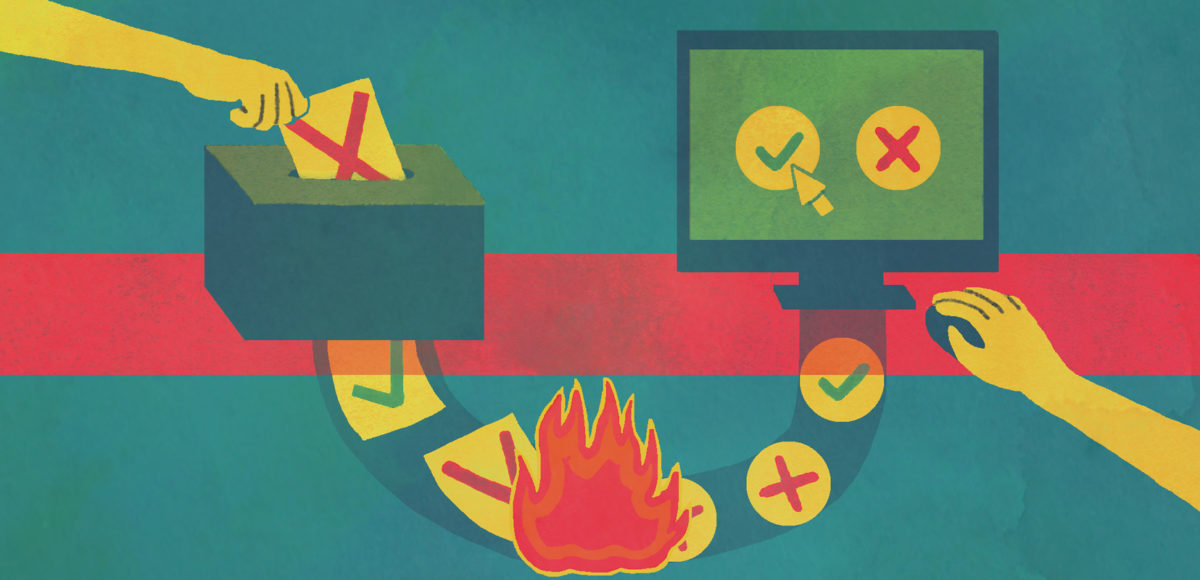As the results of the 2002 general election were publicized, Kenyans streamed into Nairobi’s Uhuru Park to celebrate. One-party rule had come to an end, the political lethargy blown away overnight. Education and land reforms would finally be implemented.
Five years later, enthusiasm had largely subsided. The coalition had fallen apart over constitutional amendments that had left the country divided. As tensions grew, the run-up to the 2007 election was marred by irregularities and a rising tide of hate speech. When results came in and gave incumbent Mwai Kibaki a slim majority, Kenyans took to the street. The post-election violence that ensued left approximately 1000 Kenyans dead, many more displaced, and the trust in democratic institutions at a low.
An Independent Review Commission concluded that the 2007 elections had not “lived up to the standards of a transparent, free and fair election”. As Nanjala Nyabola recollects in her recent book Digital Democracy, Analogue Politics: How the Internet Era is Transforming Kenya, the Commission proposed a solution to bridge the trust gap: technology.
And in 2017, the time seemed ripe. As the election drew closer, Kenya’s digital voting system appeared to be ready for implementation. An entirely digitized voter database would enable Kenyans to register, biometrical cameras would identify them, and a digitized voting booth would transmit results. The underlying theory was fairly clear: No human in the chain, no opportunity to interfere. And Kenya was willing to pay a hefty price for it: substantial investments made it one of the most expensive elections on the continent.
You need to trust the agencies that administer the platform to believe that the platform delivers democratic results. It seems like an impasse: trust and technology are caught in a circle.
But on election day, the system failed. Only partially implementing the digital system, electoral committees had gone back to voting by paper. The results of the voting platform were eventually dismissed by the Electoral Commission as mere “statistics”. After the opposition protested the outcome, the election was repeated and boycotted, ultimately resulting in a victory of the incumbent, Uhuru Kenyatta.
The episode shows: Technology cannot replace trust in institutions. In fact, it crucially depends on it. You need to trust the agencies that administer the platform to believe that the platform delivers democratic results. It seems like an impasse: trust and technology are caught in a circle.
One possible route out of this dilemma is to think of digital voting platforms as institutions in themselves. In political science, institutions are sets of rules and shared understandings that constrain and prescribe actors’ actions and interactions. As such, they should transcend the people who enact them. In theory, neither voters nor the Electoral Commission should be able to meddle with the rules and hence the outcomes of the platform. The key question is: how do you get voters to trust institutions?
Apart from the obvious points – improve the platform, detach it from the incumbent government, make it more accessible – turning a voting platform into an institution requires repetition and regularity. In Taiwan, e-Government platforms played a crucial role in the 2014 Sunflower Revolution. Since then, they have become part of Taiwanese normality. In The Death of the Gods: The New Global Power Grab, Carl Miller shows how the diffusion of power from parliament to platform is largely accepted. They have become so ubiquitous that Taiwan’s citizens have been socialized into using them. In other words: they are on track to become institutions.
Turning a voting platform into an institution requires repetition and regularity.
The process of institutionalizing platforms is of course, far more complex. And institutions always come with their pathologies, which is a topic for itself. With these caveats in mind and despite all its differences, the Taiwanese experience holds a few conclusions for Kenya and democracies more widely. It suggests that building eGov that surrounds its citizens not just on election day might be the key. This is already underway as Kenya rolls out a large-scale digitization strategy.
At the same time, it should also limit enthusiasm about the potential of technology. As Nyabola concludes, you can’t fix online what you’re unwilling to fix offline. In Taiwan, it took a tech-based revolution and the brilliance of a single activist, Audrey Tang. While such a revolution still appears distant Kenya, its online activists are more active than ever before.

 | Technology, AI and ethics.
| Technology, AI and ethics.

